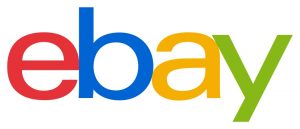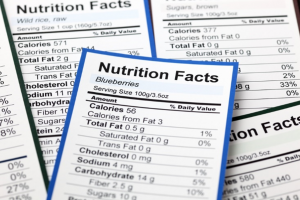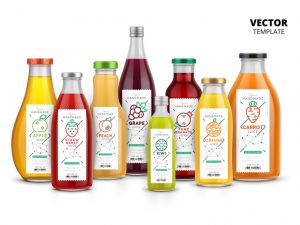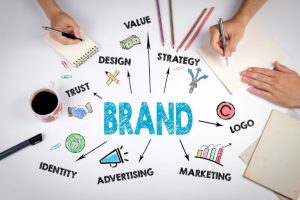Asset labels are tags that have an adhesive backing and are primarily used for identifying equipment using serial numbers or barcodes. They come in a variety of shapes and sizes, and can be made from an array of materials including vinyl, polypropylene and aluminium and are used in a number of sectors such as the NHS, schools, colleges, and businesses to track equipment, control inventory, prevent theft and provide maintenance information.
Asset labels are the most important component of an effective asset tracking system, enabling businesses to monitor moveable equipment, automating documentation and gathering information about how the asset is utilised, setting up regular maintenance and to track any repairs.
Types of Asset Labels available from DataLabel
Here at DataLabel we have a variety of different asset labels to choose from depending on the application, these are:
Vinyl Asset Labels
Vinyl Asset labels are our most economical labels, and are primarily used around the workplace on electrical items such as computers and laptops, and are perfect for monitoring stationary and moveable assets.
Vinyl asset labels are available in four standard colours, are supplied on a handy roll format and are available in two sizes (38 x 19mm or 50 x 25mm).
Polypropylene Asset Labels
Polypropylene Asset Labels are designed to stick to a wide range of surfaces and are safe to use in temperatures between -10°C and +80°C. These durable labels can be used indoors and outdoors and are available in over 30 different sizes and 14 different colours.
3M Polyester Asset Labels
3M Polyester Asset Labels are specially designed for heavy-duty protection and resistance against abrasion and chemicals. They are overlaid with polyester film, making them last for up to 5 years under the harshest of conditions.
Able to withstand temperatures between -40°C and +140°C, 3M Polyester Asset Labels are available in 14 colours, over 30 different sizes and come in a handy roll format for ease of use.
Anodised Aluminium Asset Labels
These are one of our most durable asset labels and are durable and hard-wearing, enduring high temperatures, abrasion, solvents and much more. Anodised Aluminium Asset Labels are ideal for indoor or outdoor use, are etched in a range of colours and are available in eight different sizes.
Tamper Evident ‘VOID’ Polyester Asset Labels
These clever void asset labels let you know when a piece of equipment has been tampered with, revealing a void pattern if the label is peeled off. Once stuck down, these labels cannot be removed, giving peace of mind and alerting you to any tampering.
Tamper Evident Polyester Asset Labels have a laminated protective film overlay for durability and come in a handy roll format for ease of use. These labels are available in 30 different sizes and 14 standard colours.
Destructible Vinyl Asset Labels & Stickers
Our destructible vinyl asset labels are similar to our void asset labels in that they let you know when a piece of equipment has been tampered with. The specially designed vinyl material will split into smaller pieces when someone tries to remove it making it perfect for security.
Our Destructible Vinyl Asset Labels & Stickers are available in 9 standard colours and over 30 different sizes.
Write & Seal Asset Labels and Tags
These Write & Seal labels are perfect if you need to add your own information to the label. They come part laminated so that you can add the desired data, peel off the backing and stick down allowing you to use it like a normal label.
These are great for adding dates for maintenance schedules, writing departments or any other information you need. With over 1,000 different sizes and 11 standard colour, our Write & Seal Asset Labels are truly personalised labels.
With all of our asset labels, if you don’t see the colour you are looking for you can request Pantone colours to match your brand or business exactly.
To find out more information or to request a quotation simply fill in our enquiry form or call us directly on 01293 551520.
Posted in Asset Tags by Philip
 If you don’t have the barcode, don’t worry, you can also use the search box to search for the product manually. All of the item details, pictures and price can still be edited if you are not happy with eBay’s suggestions.
If you don’t have the barcode, don’t worry, you can also use the search box to search for the product manually. All of the item details, pictures and price can still be edited if you are not happy with eBay’s suggestions.

 FoodDrinkEurope, who openly welcomed the meeting said that the sector has long been calling for a synchronised and unified approach to FOP nutrition labelling thought the European Union. Adding that national initiatives, like the traffic light system in the UK and Nutri-Score in France cause fragmentation in the EU Single Market and creates confusion for consumers.
FoodDrinkEurope, who openly welcomed the meeting said that the sector has long been calling for a synchronised and unified approach to FOP nutrition labelling thought the European Union. Adding that national initiatives, like the traffic light system in the UK and Nutri-Score in France cause fragmentation in the EU Single Market and creates confusion for consumers. Involving the customer in the process of designing the packaging and giving them a say in how a product is packaged is a great tool to use to boost customer loyalty.
Involving the customer in the process of designing the packaging and giving them a say in how a product is packaged is a great tool to use to boost customer loyalty. He went on to say that the Republic of Ireland is a key export market for the majority of Northern Ireland’s alcohol producers and that is is important for all parties to “ensure that they do not create new barriers to trade on the island of Ireland”.
He went on to say that the Republic of Ireland is a key export market for the majority of Northern Ireland’s alcohol producers and that is is important for all parties to “ensure that they do not create new barriers to trade on the island of Ireland”. Packaging does its job in its naked, unadorned state, but to attract customers it must convey a meaningful message. This is done by adding brand logos, useful information about the product and key visuals that appeal to your target audience.
Packaging does its job in its naked, unadorned state, but to attract customers it must convey a meaningful message. This is done by adding brand logos, useful information about the product and key visuals that appeal to your target audience. Due to today’s technical advances, packaging now comes in a range of sizes and styles. Bigger companies usually have the capital to customise all aspects of their packaging, but for small companies and those starting out it is best to start with a simple design as tooling for custom packaging can become expensive.
Due to today’s technical advances, packaging now comes in a range of sizes and styles. Bigger companies usually have the capital to customise all aspects of their packaging, but for small companies and those starting out it is best to start with a simple design as tooling for custom packaging can become expensive. Hiring a professional packaging designer can help you plan out the best way to approach your packaging and can give you valuable guidance on layout, sizes and colours to get the most out of it.
Hiring a professional packaging designer can help you plan out the best way to approach your packaging and can give you valuable guidance on layout, sizes and colours to get the most out of it. The ENL initiative was unveiled last year and in similar to the traffic light system used on UK food labels. It uses a colour coded system, giving customers information on sugar, salt and fat content in food and drinks. One of the main differences of the ENL system is that the colours would be assigned to portion sizes below 60g unlike the UK system which works on a ‘per 100g’ system.
The ENL initiative was unveiled last year and in similar to the traffic light system used on UK food labels. It uses a colour coded system, giving customers information on sugar, salt and fat content in food and drinks. One of the main differences of the ENL system is that the colours would be assigned to portion sizes below 60g unlike the UK system which works on a ‘per 100g’ system.